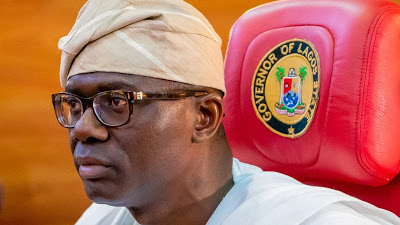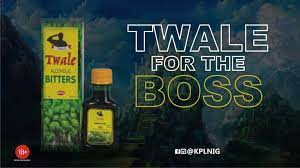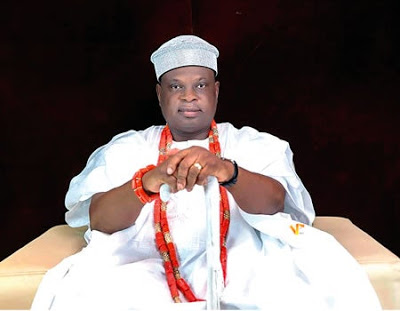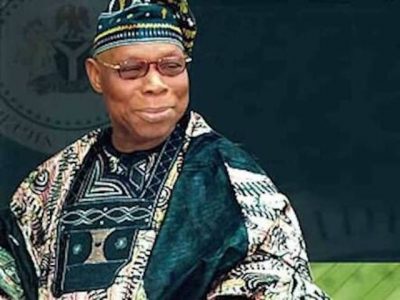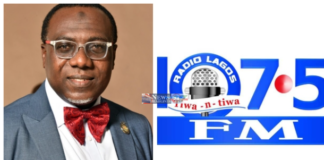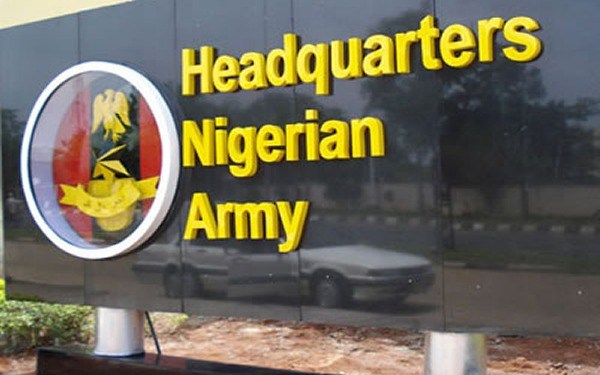OPINION
By Temidayo Bakare
Though Fashola was the arrowhead of the Lagos Mega City status, Sanwo-Olu is taking that a notch up by embarking on massive infrastructure transformation in various parts of the state
Considering the monumental infrastructure and economic development his administration has brought to Lagos State in less than five years, it is therefore trite to conclude that Governor Babajide Sanwo-Olu is driven, not just by a penchant for hard work, but the zeal to leave behind a surviving legacy, writes Temidayo Bakare
In the rich political history of Lagos State, all the democratically elected leaders, from the late Alhaji Lateef Jakande, President Bola Ahmed Tinubu, Mr. Babatunde Raji Fashola and Mr. Akinwumi Ambode, there had been a rather conscious effort by each of them to leave an indelible mark through their leadership style to pursue policies that impact development.
But unlike anyone before him, the incumbent Governor Babajide Sanwo-Olu, is taking the narrative even further, first to change the survive the second term syndrome by working tenaciously to change Lagos for good with his well-curated infrastructure projects that could last generations.
Though Fashola was the arrowhead of the Lagos Mega City status, Sanwo-Olu is taking that a notch up by embarking on massive infrastructure transformation in various parts of the state. From the transport sector to healthcare, the environment, education, technology, economy, and security, Lagos has seen consistent developmental strides to the envy of its peers.
While some observers are able to conclude that the governor may be obsessed by a desire to leave remarkable legacy projects, some have come to conclude that the motivation behind Sanwo-Olu’s successes appears to transcend merely keeping Lagos in the number one spot in terms of economic viability, but a desire to maintain the position of the strongest regional government in Africa.
The Sanwo-Olu administration has awarded the much-talked-about Fourth Mainland Bridge project to a construction consortium, Chinese contractors China Civil Engineering Construction (CCEC), and China Railway Construction in a deal worth US$2.5 billion. This will no doubt enhance the mega city status of Lagos State and bring about a new lease of life to every part of the state, especially motorists plying their trades on Lagos Island, Ikoyi, Victoria Island, Epe and environ.
The 4.5km long bridge would be the third longest in Africa, with four lanes in either direction with a 120km/h speed limit. The project would be completed under the PPP model with a 40-year concession package, and would have three tolling areas and nine intersections. It comes with the Bus Rapid Transit (BRT) corridor.
Considered a very necessary and overdue project in the state, the new link bridge would significantly address the notorious traffic problems that make Lagos roads extremely difficult to use by motorists. The Fourth Mainland Bridge would connect Lagos Island from Lekki, Langbasa, and Baiyeku and across Lagos Lagoon to Itamaga in Ikorodu.
Lagos State is confident that when completed, the Fourth Mainland Bridge project would facilitate future expansion, curb gridlock, and bring development to neighboring communities.
The delivery of an intra-state train system is undoubtedly one of the biggest achievements of the Lagos State Government under Sanwo-Olu. The Lagos Blue Line project is an electric rapid transit line that forms part of the Lagos Rail Mass Transit system run by the Lagos Metropolitan Area Transport Authority (LAMATA), which was opened for commercial use on September 4, 2023, with five stations and 13 kilometers (8.1 mi).
Governor Sanwo-Olu described the commissioning as “historic” and delightfully added: “Lagos became the first sub-national government in Africa to fund and deliver a rail system from the state’s balance sheet.”
Although initiated by Fashola, SAN, completing the project underscores Sanwo-Olu’s understanding of what exactly needed to be done to open the state as a 21st-century Mega City as guided by his advertised development agenda and to effectively harness the economic potentials of the state. Importantly, it gives fillip to the age-long prism that government is a continuum, and this, sets apart the incumbent.
In another first of its kind in the West African sub-region and the first to be self-financed by any sub-national government, the Blue Line rail project is undoubtedly one of the most prominent legacy initiatives of the Sanwo-Olu administration. It is presently serving at least 500,000 passengers daily between Mile 2 to Marina on Lagos Island.
Governor Sanwo-Olu recently assured Lagosians that the fleet would be expanded in such a way that the waiting time at the train station would not exceed a maximum of 15 minutes.
Speaking recently at the commissioning ceremony of an overpass bridge along the soon-to-be-completed Red Line, the governor revealed plans to double the number of passengers ferried daily by the railways with the expansion of the tracks by 14 kilometers up to Okokomaiko from Mile 2.
Another game changer in Lagos’ infrastructural development is the Red Line rail project. It is a 37 kilometre North-South rail route proposed to run from Agbado to Marina with 13 stations at Agbado, Iju, Agege, Ikeja, MMIA International, MMIA Domestic, Oshodi, Mushin, Yaba, Ebute meta, Iddo, Ebute Ero, and Marina. The Red Line shares tracks with the Nigerian Railway Corporation (NRC).
The Lagos State Government signed a track-sharing agreement with the Federal Ministry of Transport through the Lagos Metropolitan Area Transport Authority (LAMATA) and the Nigerian Railway Corporation (NRC) in 2018 to utilise the standard gauge railway track planned to convey commuters between Abuja and Lagos through Ibadan and Alagbado to Iddo.
According to Sanwo-Olu, who recently assured Lagosians that the project was at 95 per cent completion, the red line would start with one million passengers daily by the end of 2023, and with the land transportation improvement policies of the state government added to the massive investment in water transportation by acquisition of ferries and construction of jetties, it suffices to say that the traffic and transportation pillar of the T.H.E.M.E.S agenda, whether by road, rail, or water, aimed at reducing traffic gridlock, has begun to improve productivity and efficiency in the state.
The reconstruction and expansion of the Lagos-Badagry Expressway from four lanes to ten lanes and the Blue Line project, which he inherited from previous governments and has pursued tenaciously, is another legacy by which the Lagos State All Progressives Congress (APC) leadership would be remembered many years to come.
This is not just because the road is the link between Nigeria and neighbouring Benin Republic, Ghana, Togo, and West African nations, and thereby facilitating trade and commerce between Nigeria and these countries, the project stands to bring about rapid development in that corridor and make life pretty much easier for residents.
The governor midwifed the birth of a $1.5billion Chinese-built deep seaport in Lagos. Initially conceptualised to ease congestion at the Apapa ports and Tincan Island. The new port is certain to become an African hub for transshipment, and handling cargoes in transit for other destinations.
Located in the east of Lagos, the port was built to handle the equivalent of 2.7 million 20-foot-long container units a year. With a 1.2 kilometer quay, the 90-hectare site becomes the largest port in Nigeria, significantly expanding the country’s ability to process imports and exports.
Speaking during the inauguration by former president Muhammadu Buhari, the Chinese Ambassador to Nigeria, Cui Jianchun, told reporters that the port was capable of creating about 200, 000 jobs and generate $360 billion in 45 years. Though the new Lekki Deep Sea Port is 75 percent owned by the China Harbour Engineering Company and Tolaram group, the 25 percent balance is shared between the Lagos State Government and the Nigerian Ports Authority (NPA).
The Lagos State Government also announced readiness to commence work on an airport near the Lekki Deep Seaport, which would begin next year, following the federal government’s approval for the state to construct the Lekki International Airport. Lagosians and investors have increasingly shown interest in relocating to areas near the Lekki Free Zone, and Alaro City.
These are all iconic development strides, whose successful and timely completion were because of Governor Sanwo-Olu’s commitment to writing his name, not just in the sand of time, but also in gold. He would definitely be remembered for these achievements for a very long time in the history of Lagos.
Aside from these projects, the Sanwo-Olu administration has undertaken a lot of other impactful projects across the various sectors, and they all showed that Lagos is a state, where the leadership is dedicated to ensuring that she sustains its status as the economic capital of Nigeria and a state to reckon with on the global stage.
The construction of Africa’s largest food logistics park, in Ketu-Ereyun, Epe area of the state, which has components such as processing facilities, cold chain/dry goods services, logistics services/ trailer park, water treatment plant, health centre, fuel station/ Fire station and abattoir, and is designed to boost food security in the state and Nigeria in general. It is also commendable.
The government embarked on this project because with annual value of food transactions estimated at about USD 10 billion, farmers are losing over 40 per cent of their incomes due to lack of adequate storage facilities. To this end, the facility is expected to boost the economy by reducing waste values that arise as a result of inadequate storage facilities.
At completion, the agricultural logistics center is expected to provide direct income to more than five million traders in the agricultural value chain, while ensuring uninterrupted food supply to more than ten million Lagosians for at least ninety days in times of scarcity. The central food hub will encourage more investment in farming and food production, as well as open farmers up to modern-day storage facilities.
Another one is the Imota Rice Mill in Ikorodu. This will go down in history as one of the best endeavours of the state government under Governor Sanwo-Olu, because it came at a time when the national government was working to ensure that Nigerians relied on homegrown products by encouraging local production and saving the economy the loss of over $2billion annually spent on imported rice, for example.
The Lagos state-owned rice mill comes with the capacity to strengthen the entire national economy. With an estimated N1billion spent daily on rice importation, the Imota Rice Mill, when fully operational, would have a positive impact on the national balance of trade and also boost the economy.
Sitting on 13 hectares, it is the largest rice mill in Africa and the third largest in the world. The rice mill can produce 2.8 million bags of 50 kg bags of rice yearly while generating 1,500 direct jobs and 254, 000 indirect jobs. The Lagos government is also building an industrial park adjacent to the rice mill.
The governor said the basic amenities that would make businesses thrive and bring returns on investment to business owners would be built. The estimated full capacity of the rice mill can cater to the nation’s daily needs. Though with minimal pieces of farmable land, the state is set to become the rice basket of the nation.
Sanwo-Olu has always shown that he is an art lover and that he understands the economic values of the sector. Thus, to harness the huge potentials of the creative industry, especially as income earner for many talented Nigerians, the governor recently performed the groundbreaking of a $100 million Film City, in Epe.
The Lagos Film City project, alongside the creative training partnership initiatives in collaboration with the likes of EbonyLife Academy, Delyork, and Ogidi Studios, among others, would make Lagos State a major hub of arts and entertainment. With an estimated $15billion annual value, the Lagos entertainment and creative industry will generate thousands of employment opportunities as well as increase government earnings.
While the Sanwo-Olu administration continues to facilitate transformational projects in Lagos State, the government is also relentlessly investing huge amount of the state resources into intra-state road infrastructure development, and this has led to the construction and reconstruction of several multi-million-naira roads across the state. The government is putting a large chunk of the state’s resources into healthcare, education, security, and youth development. These are commendable efforts, when considered closely.
In a statement he made on his verified X handle on the occasion of his birthday earlier in the year, Sanwo-Olu gave a hint into the factor motivating him to work tirelessly to move Lagos to global best standards, when he said, “Every decision I make, every policy I implement, and every initiative I undertake is fueled by my dedication to the progress and well-being of every Lagosian.”
He added that, “Together, we have achieved remarkable milestones, and I am excited for what the future holds.” However, when he was reelected, the governor stated that, “I have worked hard to live up to this responsibility of governing the most important subnational economy in Africa.”
Interestingly, these assertions are true. Governor Sanwo-Olu is showing remarkable commitment to hard work and excellence, and these will sustain the APC influence in Lagos politics for a very long time,
*Bakare, a graduate of political science, lives in Ikoyi, Lagos




